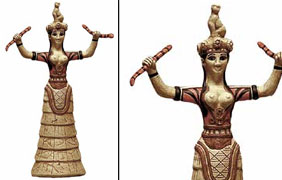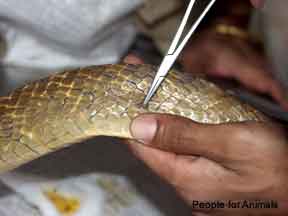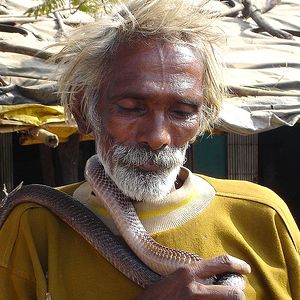PRELUDE: Thinking about a certain someone and a way to sum up said someone’s hold on me I conjured up the phrase snake charmer. in my mind he was both charmer and snake, which of course didn’t make sense, but since I’m a snake in the Chinese zodiac, I decided to google the term.
GOOGLE SCHOOL REPORT: Snake charmers originate in India and come from a highly educated lineage of men (yes, sadly no women that we know of, but the Minoan snake goddess is now thought to represent a snake charmer not a diety; so that throws an interesting wrench into the works!).

Traditionally nomadic, these men are experts in snake behavior (like knowing how far to sit out of striking reach!) how to treat different bites, and what gods to whom they are sacred. “Even the most benevolent gods are portrayed as being guarded by cobras, and the ancients believed that there existed a strange race of beings, the Nagas or serpent people, who were really snakes which could assume form at will.” http://www.lankalibrary.com/rit/cobradance.htm
Snake charmers were – and in many villages still are – revered as medicine men, and some Hindus consider them holy.
Part of a thousand year old tradition that spread from India to the Middle East and North Africa, snake charming these days is an increasingly rare practice. The reason for their decline is the wildlife protection laws enacted by the Indian government prohibiting ownership of serpents. Fucked up when you think of all the human rights violations going on there, but let’s not go there. Why the law, created in 1972, has only recently been enforced is interesting. More interesting is the secondary reason cited by Pallava Bagla in National Geographic (2002), who blames “the growing market of nature-oriented television programs in India,” which has apparently taken the charm out snake charming. ‘After seeing so many wildlife shows on television, city folk are losing their fear and awe they used to have of snakes,’ said Pitam Nath, a traditional snake charmer from the village of Morband on the outskirts of Delhi. ‘At this rate,’ he said, sitting in the forecourt of a temple, ‘I will not let my own children take to snake charming.’ ”
The cobra is the most common snake used by charmers, and apparently its natural defensive state is to stand up. Though sensitive to vibrations its unlikely they “hear” the music that “charms” them but rather they raise their bodies up and flatten their heads to protect themselves against perceived threat. Moreover, according to thinkquest.org most snakes are not treated particularly well by their charmers who sometimes sew their mouths shut to avoid being bitten, and consequently starve them. Even just removing their needle-like fangs has its consequences since the snake can no longer protect itself of kill prey.
So all this leads me to think that maybe its a good thing that this ancient tradition is coming to an end. Like bullfighting, perhaps its just too cruel? Not according to activists trying to fight the laws against them and preserve their sacred tradition. Derek Bose in The Tribune quotes a couple of particularly vehement snake charmers (Sunday, December 7th, 2003) who attended the first-ever conference dedicated to protecting their rights (and not just the snakes):
“This hostility towards us is unexplainable,” Baba Thade Dhri pointed out. “Doesn’t Lord Shiva have snakes coiled around his neck? Didn’t Vasuki (the King of Serpents) protect Lord Krishna at his birth? The entire universe rests on the hood of Vasuki Raja!”
“Babaji was a reincarnation of Nag Devata,” says Mohinder Pa, a snake charmer from Bhiwandi. “He took the human form to stop people from killing snakes out of fear. He taught them to love snakes and keep them as their protectors. It is that legacy that we are carrying forward.”
The Indian government seems to be listening – if only for the sake of tourism – setting up special snake charmer villages in conveniently located, well traveled areas. But what about the thousands of snake charmers not lucky enough to be part of these chosen few…what will they do to get by? Play in wedding bands, it turns out! “There are some saperas (snake charmers) who now work as masons and labourers, but most work in wedding bands like me.” said Rajesh Chauhan, a former snake charmer living in Sapera Basti (snake charmers’ village) near Badarpur on the outskirts of Nannu Nath. source: http://timesofindia.indiatimes.com/life/fashion/trends/Dance-to-the-tune-of-snake-charmers-at-weddings/articleshow/5602775.cms




